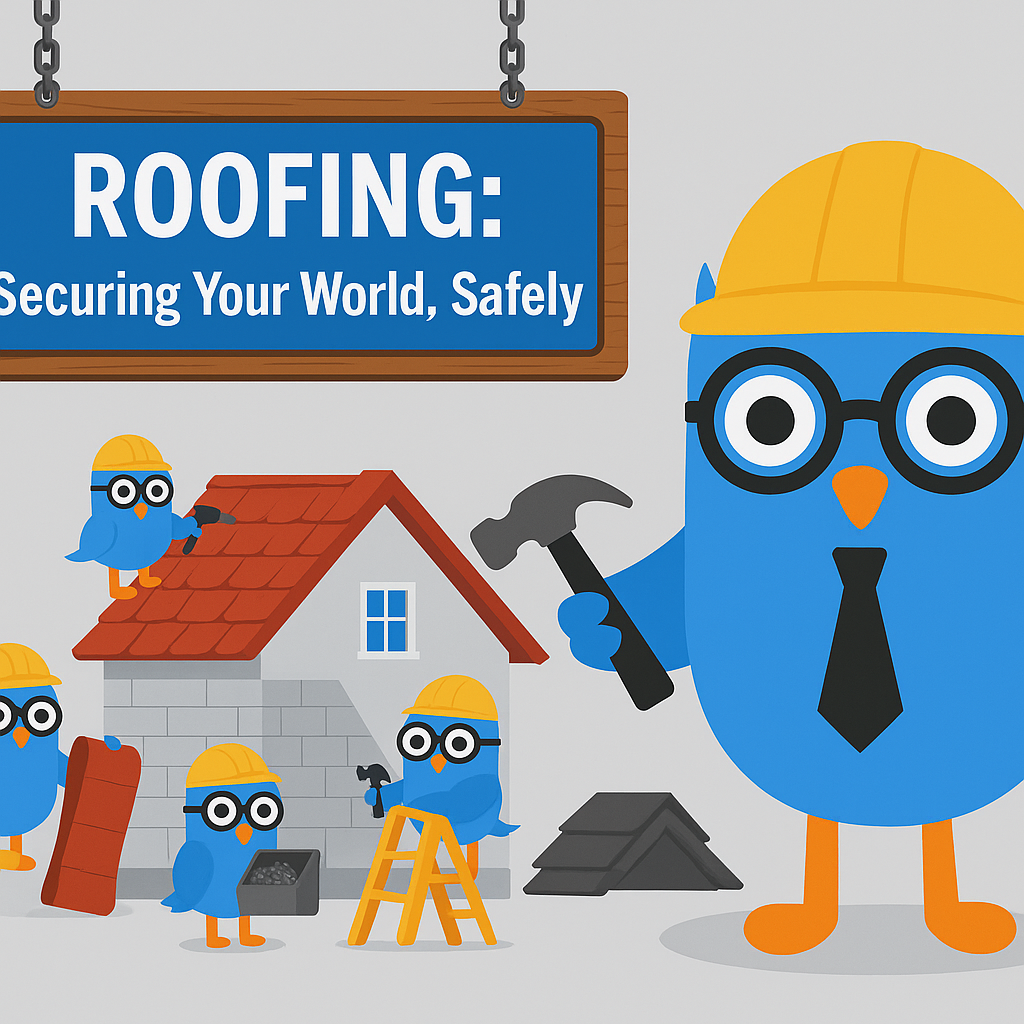Roofing Insurance: Coverage That Keeps You From Falling Flat
Mr. Hoots explains the must-have protection for roofing pros and why one wrong step shouldn’t take down your business.
Hoo’s there? Mr. Hoots here – perched high above the shingles with a sharp eye for risk. Roofing is one of the toughest and most rewarding trades out there. It also happens to be one of the riskiest. Between ladders, liability, and the weather, there’s a lot that can go wrong. Let’s talk about the coverage that keeps your roofing business solid from the ground up.
What kinds of risks do roofers face?
- Falls and injuries from ladders or roof edges
- Property damage from falling materials or leaks after repair
- Tool and equipment theft from job sites or vehicles
- Vehicle accidents while hauling materials or crew
- Weather-related delays or damage that can impact your work schedule
Core coverage every roofer should carry
- General Liability (GL) – covers damage to property, leaks after installation, or accidental injury to others
- Workers’ Comp – required for employees and critical for protecting both your workers and your business
- Tools & Equipment (Inland Marine) – covers roofing guns, nailers, compressors, and ladders wherever they go
- Commercial Auto – protects work vehicles, trailers, and material transport
- Builder’s Risk – covers materials and work in progress against theft, fire, or storm damage
Common claims in the roofing industry
- Tools or materials dropped from the roof damaging property
- Injured workers from ladder or slip incidents
- Leaks from improper sealing or flashing
- Storm damage during an unfinished project
- Theft of tools, trailers, or materials overnight
Roofing jobs are exposed to more risk than most trades, so claims happen fast and often. Solid coverage keeps those risks from hitting your wallet.
Contract requirements you’ll see often
Roofing contracts are some of the strictest in construction. Expect to provide:
- Certificate of Insurance (COI) listing GCs or property owners as “Additional Insured”
- Proof of Workers’ Comp and Commercial Auto coverage
- Waiver of Subrogation and Primary Non-Contributory endorsements
- Minimum coverage limits of $1M per occurrence and $2M aggregate
Keeping these current helps you win bigger jobs and stay compliant with safety standards.
Coverage mistakes to avoid
- Not disclosing roofing work to your carrier – some exclude it without proper classification
- Using a homeowners or handyman policy – it won’t cover roof work
- Failing to list subcontractors – uninsured subs can count as your payroll
- Underinsuring tool value – roofing gear adds up fast and is a common theft target
Quick safety wins that also help your rate
- Use fall protection on every roof, no exceptions
- Secure tools and materials before leaving the site
- Inspect ladders and safety lines daily
- Train every worker on weather awareness and job-site cleanup
Mr. Hoots’ Bottom Line
Roofers build protection for everyone else, but who’s protecting you? Make sure your insurance is as solid as the roofs you install. One uncovered claim can do more damage than any storm.
Protect the work. Protect the wallet. Because it only takes one slip to blow the whole roof off your coverage.

